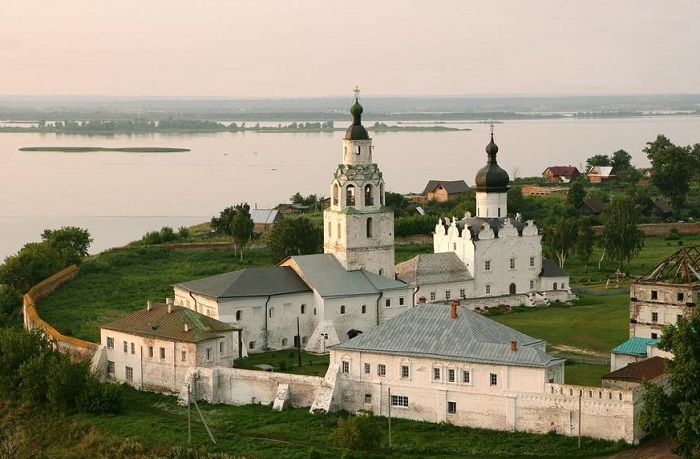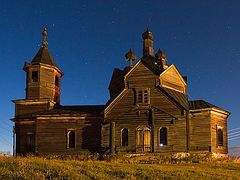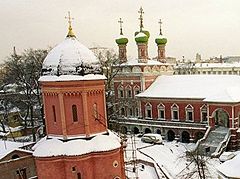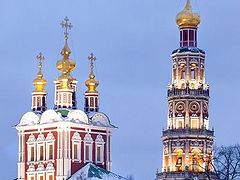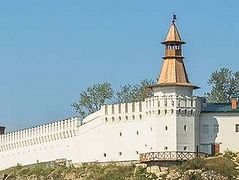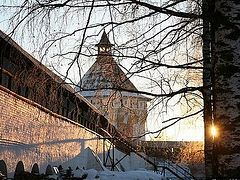Sviyazhsk, Tatarstan, Russia, July 10, 2017
By decision of the 41st session of the UNESCO World Heritage Committee on July 9 in Krakov, Poland, Dormition Cathedral and Monastery on the island-town of Sviyazhsk in Tatarstan have been included in the World Heritage List, reports patriarchia.ru.
The nomination dossier for the cathedral and monastery was submitted to the World Heritage Committee in early 2016. Large-scale restoration work on the island, including the monastery, and preparation for the dossier were carried out with the assistance of the Republic Fund “Revival,” under the guidance of the State Advisor of the Republic of Tatarstan Mintimer Shaimiev.
The nomination discussion was presented by Susan Denyer of the International Council on Monuments and Sites (ICOMOS), who visited the island in August 2014 with an advisory mission. She briefly described the cathedral and monastery, speaking about the ongoing restoration work and the special value of the monastic complex, and noted that ICOMOS supports the nomination of Dormition Monastery for inclusion in the World Heritage List. UNESCO members Lebanon, Zimbabwe, Kazakhstan, Finland, Turkey, and other countries supported the nomination.
Russian representative to UNESCO Alexander Kuznetsov also spoke in support of including the Sviyazhsk island treasures in the World Heritage list: “We see this as a recognition of the outstanding universal value of the history treasures of the Dormition Cathedral with its 16th century frescoes.” The Dormition Cathedral and Monastery join two other Tatarstan objects already included in the UNESCO list: the Kazan Kremlin, and the ancient city of Bolgar, bringing the total of Russian treasures included in the World Heritage List to 29.
***
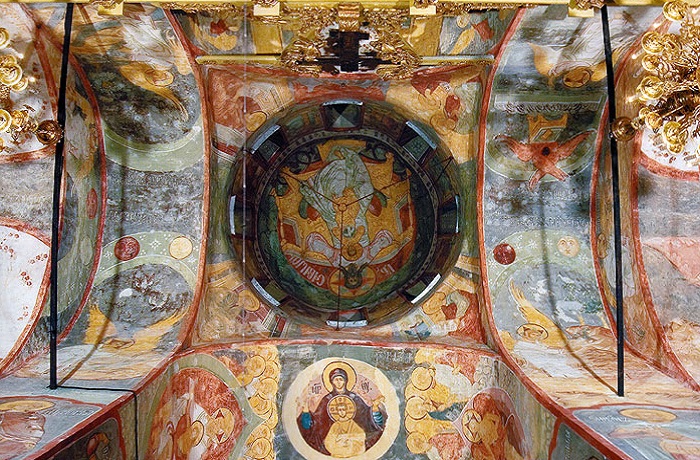 Photo: Pravoslavie.ru
Photo: Pravoslavie.ru Dormition Cathedral is included in the ensemble of the Dormition Monastery of the 16th-19th centuries. The construction of the cathedral was carried out from 1556 to 1560. A full cycle of wall frescoes from the second half of the 16th to the early 17th centuries have survived in the cathedral, as well as the iconostasis with icons from the 16th and 17th centuries. The frescoes and architectural ensemble are reflective of the new direction in Russian art and the ambitious cultural civilizational ideology initiated by the Russian state in the 16th and 17th centuries.
The uniqueness of the frescoes lies in the fact that they are a graphic record of the decisions of the Stoglav Council in 1551, and the Synods of 1553-1555, which are of historical significance not only Russia, but also for the whole Eastern Orthodox Church and the history of iconography.

